AMD EPYC 7002 Market Impact
In our individual SKU reviews, we now include a market impact section. Processors are not released in a vacuum. Instead, they are released into an increasingly competitive market. Those buying systems need to navigate which solutions to pursue for this and future generations in the context of their own IT infrastructure. We think it is most appropriate to delve into the market impact on a SKU-to-SKU basis because price and performance at different levels are a major story. At the same time, for a release like this, we wanted to go into some of the competitive positionings.
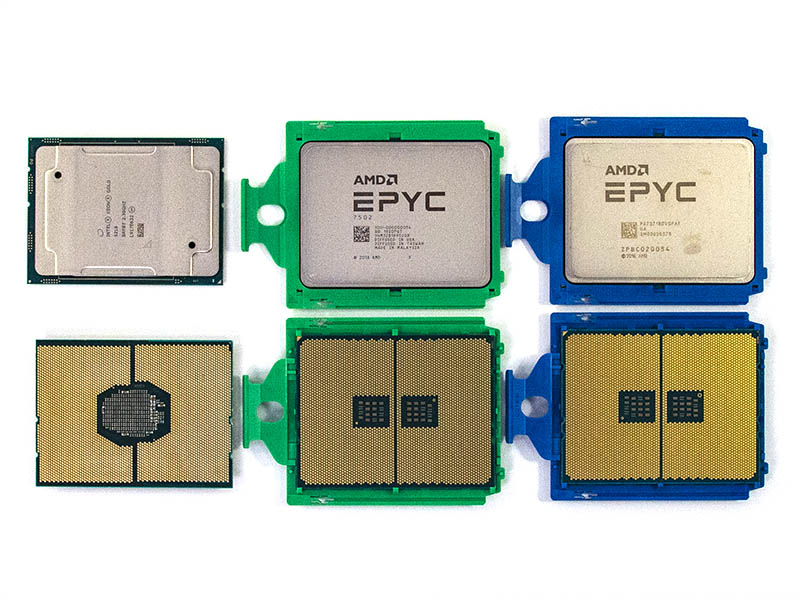
AMD EPYC 7002 v. Intel Xeon Market Impact
This is the big one. In our benchmarks, we have shown that AMD EPYC 7002 has more memory capacity (on standard SKUs), more general-purpose integer and floating-point performance, and more memory bandwidth per socket. We also showed that at a platform level, the AMD EPYC 7002 series has PCIe Gen4 and more PCIe lanes making it a more scalable solution than the Intel Xeon Scalable processors.
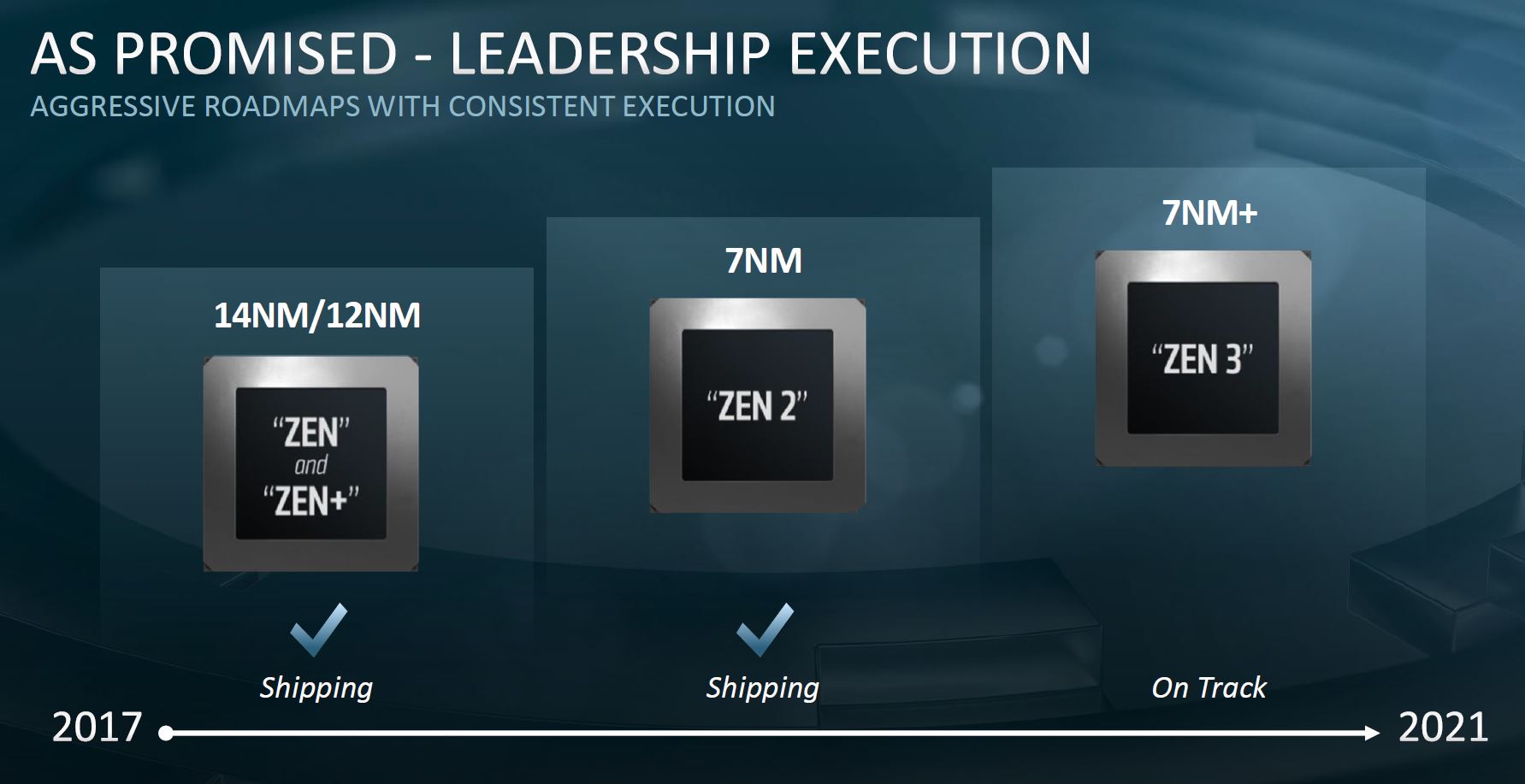
The other impact here is that AMD’s execution is strong. Delivering 2x more cores, 2x the cache, more memory bandwidth, and 2x more PCIe bandwidth in the same socket on a 2-year cadence is excellent for the x86 market.
If you are installing a new VMware ESXi cluster, you can get an AMD EPYC 7002 series CPU, like an AMD EPYC 7702P, and consolidate legacy servers at no worse than 2:1 ratios but in some cases 6:1 socket consolidation ratios even over early 2017 generation parts.
Likewise, if you are embarking on NVMe over Fabric using an x86 server as a building block, then the AMD EPYC 7002 series is now the processor to beat.
There are a few specific cases where Intel has features that AMD simply lacks at this point. Intel is still the option to get if you need:
- Extreme per-core license optimization SKUs
- Configurable core count SKUs
- Low power 1-3 node deployments
- Intel’s VNNI instructions or DL Boost
- AVX-512 today
- Intel Optane DC Persistent Memory
- An Intel CPU full stop
At the same time, if you look at Intel Optane DCPMM or DL Boost as “great features, we will use it in 2-3 years when it is better supported” then the Intel Xeon value proposition becomes harder to handle.
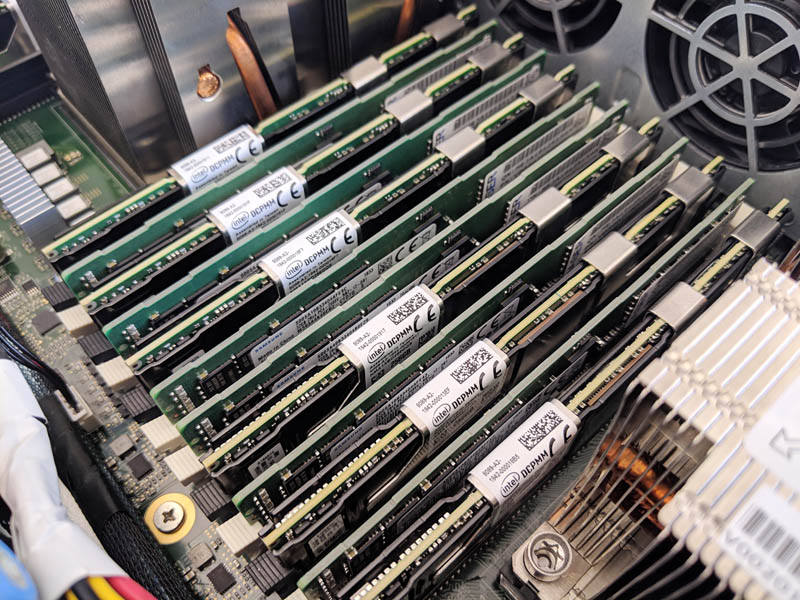
If your per-core license costs are a few hundred dollars per core, then there is a good chance that the AMD EPYC 7002 series will still come in ahead on a TCO basis once power, cooling, rack space, and system costs are included. If you are paying tens of thousands per core, Intel Xeon still has great offerings.
Likewise, if you have a 150-200W at the wall power budget per machine and need a small number of machines, the Intel Xeon Silver line is great. AMD’s offerings essentially assume one can run bigger nodes for their workloads.
If you have general-purpose virtualization or Kubernetes clusters, for example, AMD EYPC 7002 has offerings that are simply a better fit.
Intel is a company with a long heritage and great engineering talent. As the 10nm Ice Lake generation lands and future generations and solutions arrive from Intel, AMD will feel the pressure again. Until then, Intel can discount its CPUs and hope organizations do not want to make a PCIe Gen4 transition soon.
AMD EPYC 7002 v. Intel Xeon Platinum 9200 Market Impact
We wanted to call out the Intel Xeon Platinum 9200 series specifically here. Intel has a 56 core/ 112 thread chip that is designed for dense HPC clusters instead of mainstream server applications. You can read more about this in Why the Intel Xeon Platinum 9200 Series Lacks Mainstream Support. Key reasons are the fact that only Intel makes the systems these chips use and there were major trade-offs Intel made to make this AMD EPYC 7002 competitor. Remember, Intel announced Cascade Lake-AP just about the same time AMD confirmed 64 cores.

The Intel Xeon Platinum 9282 is designed to have more bandwidth per socket since it is a 2P Xeon system in a single socket. At the same time, one cannot have features like Intel Optane DCPMM support and two DIMM per channel support. From a memory capacity standpoint, standard Intel Xeon Scalable parts in four-socket configurations are better, albeit packaged less densely.
Intel may have the memory bandwidth and AVX-512 crown here. For most workloads, if you recall our testing, and AMD EPYC 7742 in dual-socket configuration will deliver similar performance in half the power consumption (or less) outside of those specific use cases. Once you venture out from memory bandwidth and AVX-512 performance and need to look at things like facilities that can support CPUs in 2U 4-node configurations, AMD becomes the obvious choice, and at a fraction of the list price cost.
If alternatively, you are anti-green and power-saving initiatives in your organization, using high-power Intel Xeon Platinum 9282 will help achieve your goals. Intel is adding bfloat16 support and claims lower power in the next-generation Cooper Lake parts for this segment.
AMD EPYC 7002 v. Arm Market Impact
The AMD EPYC 7002 launch is relatively devastating for the Arm market. Intel is quick to point out live migration challenges between Xeon and EPYC. Between architectures, one can still do a fast shutdown VM/ restart on another node migration in an automated manner, usually in a handful of seconds. An organization can realistically build an AMD EPYC 7002 cluster and migrate any clusters from the first generation Intel Xeon Scalable designs that were still current as of two quarters ago without much thought. Moving to Arm would likely entail additional work.
For AMD as an alternative to Intel, IT organizations can do a low effort and low-risk migration. That is something Arm cannot offer. Also, Arm chips in the market that competed on price/ performance with the first generation of Intel Xeon Scalable are not as attractive compared to an x86 line that is running at around 25% the dollar per performance unit of Intel Xeon’s second generation.
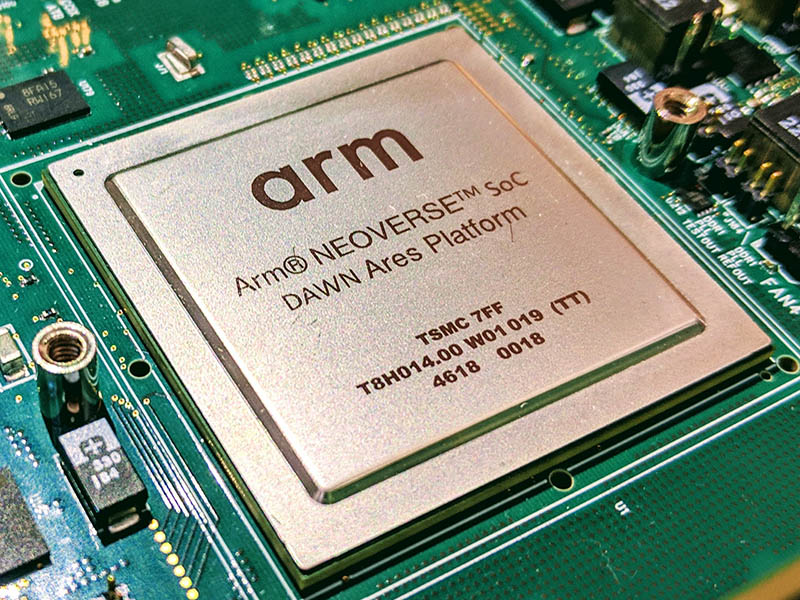
Next-Gen Arm Neoverse N1 and E1 Cores will change this, but AMD’s aggressive PCIe Gen4 and core count push will limit the advantage these future designs have in the market.
On the other hand, Arm has one major ecosystem that AMD cannot readily touch: the IoT and edge development. Every company that needs an IoT strategy likely has, or is starting to build, an Arm CI/ CD pipeline. For those pipelines, buying Arm servers makes a lot of sense.
AMD EPYC 7002 Power 9 Market Impact
For the IBM Power play, this is an interesting launch. Power has innovated on architecture and held leads with features like PCIe Gen4 before x86 got it. Now, AMD has PCIe Gen4 and a lot of lanes.
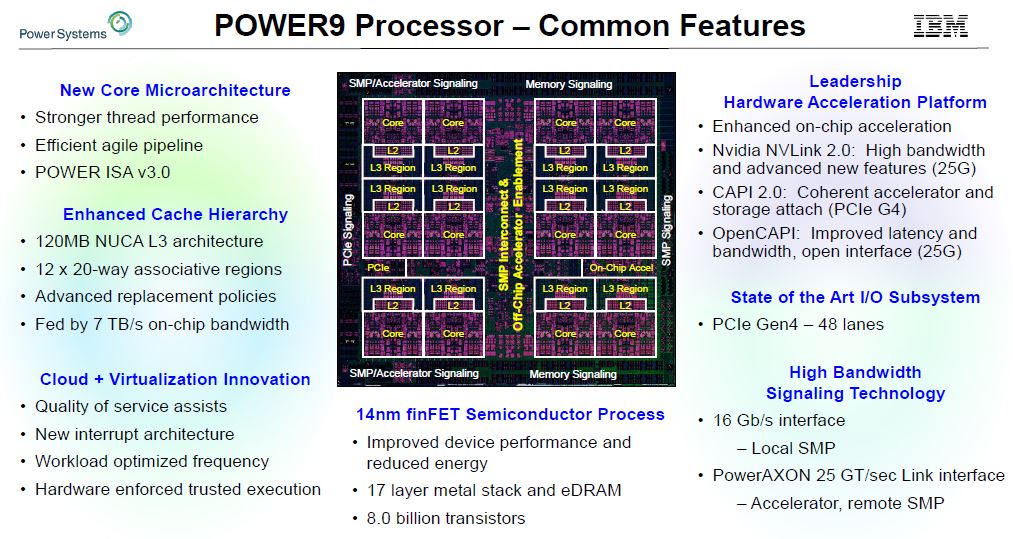
For traditional IBM Power markets, we do not see AMD EPYC 7002 as an imminent threat. On the other hand, for the scale-out ambitions of Power, the AMD EPYC 7002 is set to make life difficult. Whereas three years ago Power was the high-performance Intel Xeon alternative, AMD is now in that position with an x86 chip.
We wanted to start with the high-level view of the SKU stack, and AMD’s planned transition plan first. Doubling the maximum core count from eight to 64 cores, while also increasing IPC, means mapping is less straightforward.
Final Words
AMD hit an unqualified home run with its 2nd Generation EPYC platform. This is now the platform to get in the market. Intel has talented engineering teams and in 2020 they will be competitive again. In the meantime, this is AMD’s market. There are many reasons for still buying Intel Xeon Scalable, but for the vast majority of users, unless 2nd Generation Intel Xeon Scalable CPUs are being discounted very heavily, AMD gives you more performance per dollar and per watt. Plus, AMD has a more modern architecture that Intel looks to follow in 2020 with Cooper Lake that it announced this week having almost as many cores.
At this point, what AMD needs is twofold:
- Partner systems to be readily available, and soon.
- Customers to change behavior and buy AMD EPYC.
Compared to our adventures testing the AMD EPYC 7001 series at launch, the systems we have in the lab designed for the 2nd Generation AMD EPYC 7002 series with PCIe Gen4 are much more refined. It would have been hard in August 2017 to install an AMD EPYC server in a production environment. Today, I would have no issue adding to the AMD EPYC servers in our production environment with the new generation EPYC 7002 CPUs and platforms. That says a lot about the work over the last two years getting the ecosystem going. At the same time, AMD needs these partner systems soon because it is now operating in an environment where Intel does not have a competitive product for several quarters.
The second is important. Customers need to adopt AMD EPYC. To our readers, it is important when you get a quote to at minimum quote an AMD EPYC alternative on every order. More important, follow through and buy ones where Intel is not competitive. If AMD EPYC 7002, with a massive core count, memory bandwidth, PCIe generation and lane count, power consumption, and pricing advantage cannot take significant share, we are basically done. If AMD does not gain enormous share with this much of a lead, and easy compatibility, Intel officially has a monopoly on the market and companies like Ampere and Marvell should shut down their Arm projects. If AMD does not gain significant share, there is no merit to having a wholistically better product than Intel.
Gaining that share requires that customers have the courage and mental fortitude to realize that there is an alternative in the market, realize it is significantly better (save for some non-mainstream use cases), and to follow through in their quotes and RFPs. As an industry, we need products that are objectively better in almost every aspect to gain share. For IT organizations, this is a prime opportunity to also re-evaluate ROI of bringing more Linux and VMware infrastructure back from the cloud where many cloud providers are trapped with older-generation Intel Xeon servers.
The bottom line is this: for the vast majority of the market, the TCO story for the AMD EPYC 7702P, and other SKUs is too good to ignore. Intel does not have a competitive product on tap until 2020.
Stay tuned to STH as we delve into more detail on the new AMD EPYC 7002 generation in future articles. That may seem strange after this 11,000+ word article, but there is a lot more to this story that we will cover in time. At this point, we are giving our STH Editor’s Choice Award to AMD EPYC 7002 which is only the third time we have ever given out the award.
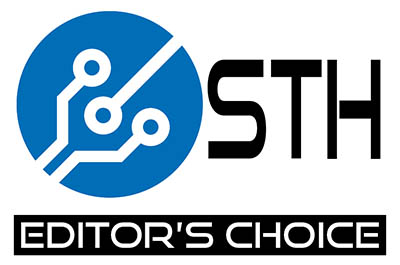




This is crazy!!!
Absolutely amazing. I still can’t believe the comeback AMD has made in just a few years. From a joke to toppling over the competitor for the top position in what, 3 odd years?
Definitely going to get this for our next server build. Major props to AMD.
Great job AMD! We’re going to look at 7002 Monday in a team meeting.
Gates. Jobs. Su.
I hope amd has enough stock to satisfy the demand so they could gain market share.
Impressive review ! With Lenovo and Google also on the Rome journey, AMD has a brilliant future.
“Intel does not have a competitive product on tap until 2020.”
Cooper Lake is not remote competitive with Rome, much less it’s actual 2020 competitor Milan.
Highly unlikely Intel will be close to competitive until it’s Zen equivalent architecture on it’s 7nm node.
Wow! I’ve been holding out upgrading my E5 v3-generation server, workstations, and render farms in my post-production studio because what has been available as upgrades seemed so incremental, it was udnerwhelming. And now here comes Rome and the top SKU is performing 5-6X faster than an E5-2697 v3! Maybe a weird comparison, but specific to me. I’m thinking back to some painfully long renders on recent jobs and imagining those done 5x faster…
I would really, really love to see some V-Ray or even Cinebench benchmarks. I know I’m not the target market, but I’m not alone in wanting this for media & entertainment rendering and workstation use. Any chance you could run some for us?
Also, what Rome chip would you need for a 24x NVMe server to make sure the CPU isn’t the bottleneck?
Great work, as always. Thank you!
Intel’s got Ice Lake too. I’d also wager that Patrick and STH know more about Intel’s roadmap than most.
Ya’ll did a great job. Using CPU 2017 base instead of peak was good. I thought it was shady of AMD to use peak in their presentations.
I’d like to see sysbench come back.
Are all the benchmarks done after the applying the fixes for SPECTER and friends?
Most OEMs will have no problems with moving to Rome but Apple is in a tough situation with their Intel partnership, aren’t they? How can they market Xeon generational improvements when others are will be talking about multiplying performance and a substantial relative price decrease?
XENOFF
Partnership gives some discount. I am right?
Take a look at the top of dual socket systems in the SPECrate2017_int_base benchmark here:
Supermicro already posted a 655 base with 7742’s to top the charts.
For render farms, wait for 64core Threadripper.
Wizard W0wy – we applied patches, however:
1. We left Hyper-threading on. I know some have a harder-line stance on if they consider HT on a fully-mitigated setup.
2. We did not patch for SWAPGSAttack. AMD says they are already patched or not vulnerable here. Realistically, SWAPGSAttack came out the day before our review and there was no way to re-run everything in a day.
Tyler Hawes – we have the Gigabyte R272-Z32 shown on the topology page. That will handle 24x U.2 NVMe but that will be a common 2U form factor in this generation. CPU selection will depend on NIC used, software stack, and etc., but that is a good place to investigate.
Awesome article STH
I would love to see some more latency test, Naples had some issues with latency sensitive workloads in part due to the chiplet design. So, will you guys test it out in the future?
And more database tests?
You did mention you would talk more about 3rd Gen EPYC? I don’t think I saw it anywhere in the article. Will it be out to compete with Ice Lake? What are the claims so far?
Thanks for the great article! Best I’ve read so far.
I’m also disappointed in the lack of a second gen 7371 SKU. Our aging HP GL380p G8 MSSQL server is due for a replacement, and I don’t want to have to license any more cores. Per-core performance really shines considering $7k/core. It would feel wrong to deploy without PCIe Gen 4; I might drop a 7371 into one of the new boards (if I can get any vendor support) and swap it when the time comes.
I appreciate the amount of work you have done in compiling all this information. Thank you, and well done.
Also, well done to AMD! What an amazing product they have delivered. Truly one of the greatest leaps in performance-per-dollar we have seen in recent years.
Can we get some C20 scores for the LuLz
Hello Patrick,
There was a Gigabyte converged motherboard layout (H262-Z66) floating out that showed 4 Gen-Z 4C slots coming from the CPU. There were rumors of Gen -Z in Rome going back to the Summer of 2018; Is there anything you can tell us about that?
Hi guys, taking my wife to the hospital in 30 minutes for surgery. Will try to get a few more answered but apologies for the delay later today. She broke her elbow (badly.) Thank you for the kind comments.
Jesper – it is a bit different in this generation. When you are consolidating multiple sockets, or multiple servers, into a single socket, your latency comparison point becomes different as well. We have data but tried to manage scope for the initial review. We will have more coming.
Luke – Milan is coming, design complete, 7nm+ and the same socket. AMD said the Rome socket is the Milan socket.
Billy – I think AMD’s problem is that there is so much demand for their current stack, some of those SKUs did not make the launch. I am strongly implying something here.
Michael Benjamins – 2P 7742 was 27005 without doing thread pinning. There is a lot more performance there. Also, Microsoft Windows Server 2019 needed a patch (being mainlined now) to get 256 threads to boot. I am not sure if I want to show this before we get a better tuned result. Even with this, R20 hits black screen to fully rendered in ~12 seconds. Cores were under 40-98% load for <10 seconds with R20. I actually think R20 needs a bigger test for a 256 thread system.
I’m not sure I understand the paragraph about Intel putting pressure on OEMs. What exactly should not be named/disclosed? Can someone please explain the meaning to me?
Sounds like the typical and shady anti competitive measures Intel is known for.
p.s. I hope this is not a double post, but I got no indication if my previous submit worked or not.
Quick question on the successor to Snowy Owl? Have we got an ETA, or will AMD simply pop Ryzen in its place, like ASRock have done?
From Spain, our best wishes and speedy recovery for your wife. Thank you very much for your work.
This is f@#$ing great work. You’ve covered high-level, deep technical, business and market impact, with numbers and practical examples like your load gen servers that are great. I’ve read a few of the other big sites but you’re now on a different level.
To anyone that’s new I’ll reiterate what I said on the jellyfish-fryer article
Patrick’s the Server Jesus these days.
He’s done all the server releases and they’re reviewing all the servers
Okay. My criticism was this looked really long. I started reading yesterday. Finished today. Why’d AMD have to launch so late????
After I was done reading I was totally onboard with your format. You’ve got a lot of context interjected. I’d say this isn’t as sterile as a white paper, but it’s ultra valuable.
Now get to your reviews on CPUs and servers.
@Youri and another Epyc system from Gigabyte already beat the SuperMicro one at your link ;)
R282-Z90 (AMD EPYC 7742, 2.25GHz)
Great read. Thanks Patrick!
I’m thinking you should submit this to some third tier school and call it a doctoral thesis for a PhD. That was a dense long read. I’ve been reading STH since Haswell and I’ll say that I really like how you’ve moved away from ultra clinical to giving more anecdotes. I can tell the difference reading STH over other pubs. This is deep and thorough.
Cracking review. More SQL (Postgres) when you have recovered :)
What vendor can accept the first orders for the systems with AMD EPYC 7002 (configurator ready) and is able to ship let’s say within next 2-3 weeks?
I am so glad I waited until today to read this, when I could sit down and read at my leisure. Thank you Patrick and team. This is why I read STH.
“2. Customers to change behavior”
This is likely not what AMD can do since there is no medicine or medical operation available to fix stupidity!
Stupidity can’t be fixed by others except people themselves!
Mike Palantir,
During the event, I thought I recalled the HP rep stating they had systems available for order today.
FYI Rumour rag, WCCF claimed to Fact check your statistic’s!
“Warning: some of the numbers below are simply absurd.
ServeTheHome reviewed the top-end 64 core dual socket and found that “AMD now has a massive power consumption per core or performance advantage over Intel Xeon, to the tune of 2x or more in many cases.”
The new EPYC parts have a massive I/O advantage with 300% the memory capacity versus Xeon 33% more memory channels (8 versus 6) and finally 233% more PCIe Gen3 lanes. But what about actual performance?”
We called our rep today at Lenovo after reading this. They said they’re shipping aug 30
This is probably a dumb question but are there any vendors that will be selling individual chips (not systems) within the next quarter or two? And who would the best vendor be?
Thanks
guys.. remember that both AMD and us as customers do owe TSMC a lot. Without TSMC all this would probably be not possible today.
Never mind my previous comment. Newegg is selling the processors and is already on back order to the end of August for most of the desirable SKU’s.
Patrick thank you for the informative article and all the great work you and your team do. Also would like to thank the STH readers for their article comments and posts in the forums. This is one of very few sites where I actually enjoy reading what other people think and say…
And thank you for the nudge nudge wink wink information with regards to the 7371 style skus. I have a application that processes in a very serial fashion and it benefits from higher megahertz vs Core quantity, though 16 cores is perfect for the SQL and other tasks on the machine. I’m excited about the new NUMA architecture and I’m looking forward to whatever is next.
Best wishes and a speedy recovery to your wife!
@Billy
Epyc 7542 would probably match or beat the 7371 in mosts lightly threaded tasks.
@lejeczek
What can TSMC make that Samsung couldn’t?
Amazing writeup Patrick, once again! Beamr is proud to be a Day 1 application partner as the only company focused on video encoding. As a result of this amazing achievement by AMD, on the Gen 2 EPYC we were demonstrating at the launch event 8Kp60 HDR live HEVC video encoding on a single socket of a 7742.
And as a result of having 64 high performance cores, because we are heavily optimized for parallel operation, all cores were utilized at 95% or above! Beamr is super excited to have this level of performance available to our first tier OTT streaming customers and large pay TV operators.
AMD has broken through on so many levels with this new processor generation that I understand why you feel the need to even go deeper with your analysis and review after writing an “epic” 11k word article.
Great look at the next big thing… After it all, I can only ask if with FINALLY a 1 node socket is there any talk of 4P or 8P…
The thought of 512C\1024T in a 4U is like dreams come true… And if the rumors of SMT4 turn out to be true (EUV does give 20% more density and power-savings) 512C/2048T could do most heavy jobs in one box…
And it does change the landscape since the progression from 8C to 64C covers basically 100% of the market.. The market doesn’t care if they need 1P or 8P, they only care about the areas where AMD is excelling…
Another interesting area I’m not seeing a lot of is Edge Computing… This should seal the deal with an 8 or 16C that can have 6 NICs and an Instinct for AI inferencing…
Love the site… Looking at bare metal in the future…
So what they’ve figured out that other sites haven’t yet, is the whole consolidation story. That 4 Xeon E5-2630 V4 to 1 epyc really resonates.
It will be interesting to see how long it is before VMware and other companies start adjusting their licensing to reflect future market trends. Software companies have investors to please too. If Intel doesn’t have anything to compete by the time prices start going up then it could cause a huge wave of companies switching to AMD for the simple fact that their licensing would be too expensive otherwise. The other thing they could do is switch. Everything to per core licensing which would give Intel a slight advantage or possibly just a tie once you factor in the total cost. I bet you big changes are coming though. No company could survive having their revenue cut to 1/6 its original value in a couple of years.
So this is me just thinking about this some more. It will also be interesting to see the impact this could have on interest in open source alternatives. Costs jumping 2-6x are the kind of events that get people to start looking into alternatives.
Colby, vmware changing its licensing to per core after appearing and praising rome on stage together with amd, would be one of the top3 stupidest move this industry has ever seen. Not impossible, but highly improbable.
Yeah but in my experience when it comes to looking like an idiot and having to explain to your investors and wall street analysts why your revenue stream has been cut in half most CEOs would prefer to look like an idiot. After all the CEO owns a good portion of the company as well. I don’t necessarily think it will be all at once but instead of a 3% annual increase we may start seeing 10-15%. They also may be hoping that due to the cost reduction allowed in Rome that they will see more customers coming in looking to virtualize since it will be cheaper. Another thing that could potentially go VMware’s way would be if customers just started giving more resources to each vm since they aren’t as constrained by their licensing anymore. Instead of dual core vms with 4GB of ram now everyone gets
…everyone gets 4 cores and 8GB with the benefit to the company being added productivity. Nothing happens in a vacuum in business but the question is what factors are going to prevail the most.
Rome was rumored to support CCIX. I couldn’t find any confirmation of this. Is that the case?
Just joining in for the thanks. The most thorough and in-depth review on the net I’ve found so far.
Also, Patrick, I wish your wife quick and full recovery. So you can get back to benchmarking, that is ;)
I’m surprised at how inexpensive the lower core count 1P processors are. Are these practical in a high end CFD workstation or for other compute intensive workstations ?
Someone needs to compare the Ryzen 9 3950X ($750) with the soon to be released 16 core Zen2 with the 7302P ($825). Can’t believe a 16 bit Rome EPYC is only $75 more than the R9 ! The 16 core Zen 2 has to be priced between these 2 devices, maybe $800 ?
With the 7502P (32 cores) selling for $2300, I guess we know the upper end of the price on the Zen2 32 bit Threadripper.
Another thing to keep in mind is that Zen3 products will be shipping in 15 months or so. They will surely push down the price/performance curve even further. Zen 3 will be 7nm EUV, which should be 20% higher density, lower power consumption and faster clock speeds. Zen 3 Ryzen should be 32 core, TR should be 128 core, EPYC should be 128 or even 256 core !
@Nobody I’m also really curious about the suitability of these chips for a workstation and how they compare to threadripper. Patrick thought the clock speeds on gen 1 EPYC chips were too slow before the 7371 was released.
Devastating. Adding the fact that second generation is compatible to SP3 and vendors have v2-enabled BIOSes out there already is a serious hit. Good job, AMD
Followed the link back from your article on the 7 and 10nm Intel woes. When you wrote this, you expected Intel to be competitive in 2020. Instead Intel’s process woes have messed up the other parts of the company, and they are considering contracting out CPU and GPU production!
I never thought I’d see Intel mess up so badly on process, and I know I’m not alone on this. It has given AMD a really big doorway, and curiously enough also seems to have opened the doorway further for ARM vendors, due I think to AMD being limited in production capabilities.